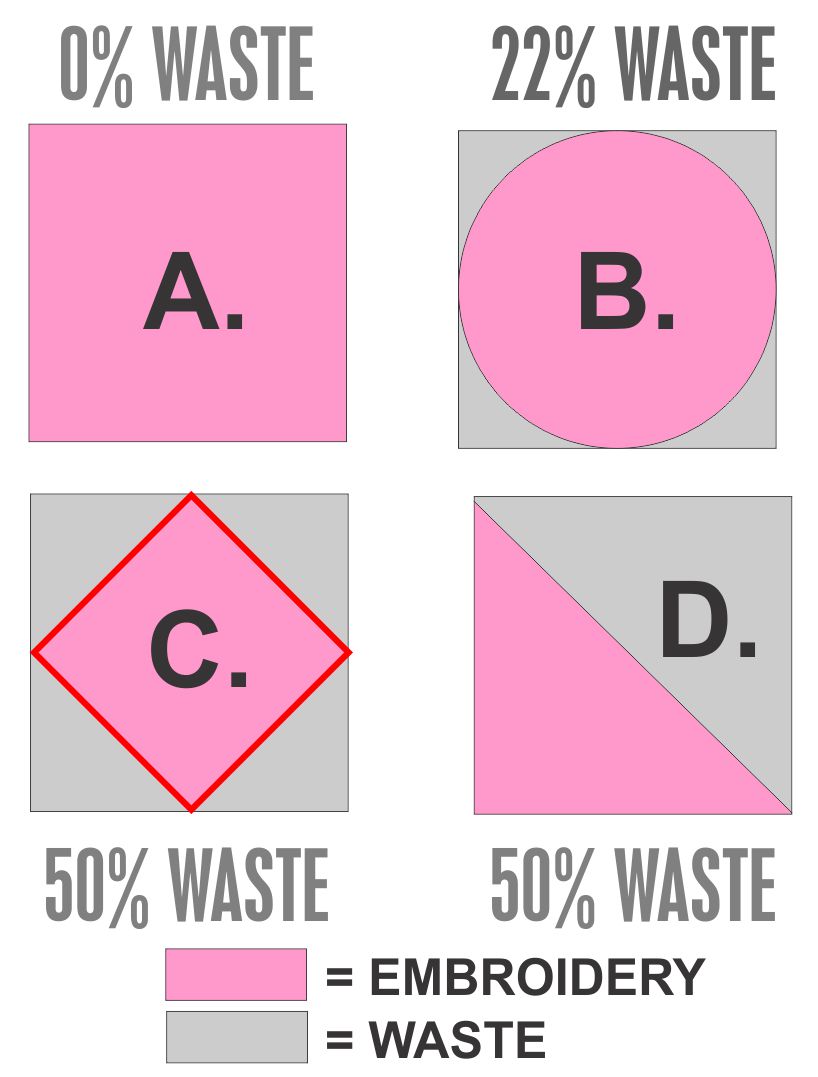When dreaming up ideas for patches, most people consider the patch shape for aesthetic reasons while only a few consider shape for content reasons. In fact, we’re often told we should try to make the shape of the patch interesting because squares and rectangles are just too common or boring and not sufficiently creative. Here’s why patch shape is an important consideration which can determine how much value a customer may get for their patch dollar – how many stitches or how much content.
If you don’t know how patch size is determined, please read this post first. Suppose someone wants a 3 inch patch. In that case, the most space (area) available to them for content (stitching) is 3″x3″ or nine square inches. Now, suppose they have a rough design and have made it circular in shape. By looking at section B of the above image diagram, we see they are doing the equivalent of cutting off the corners of a square to make a circle. That’s a loss of almost a quarter (22%) of their available stitching space.
There is no cost savings for various shapes so making the patch a circle, if it could have been a square, means they’re paying for 22% less patch content. A triangle shape is an even more extreme example of losing valuable embroidery as you can see in section D of the above image. Content which dictates the patch shape is a triangle can be the equivalent of throwing half of the potential content away – a 50% waste of space.
Diamond shapes deserve special consideration. A regular diamond – one with four sides of the same length – is really just a square tilted or rotated 45 degrees. So, if a patch buyer wants a diamond shaped custom patch, they should make sure the size dimension is along the tilted side (the red lines section C of the above diagram) and not along the height or width. If the patch company has a premade stock or catalog patch in a diamond shape, it should be understood the size advertised is determined by measuring along the patch edge before buying. If they are using the usual height and width dimensions, the customer may end up with a much smaller patch than expected (50% smaller) as shown in section C of the above image.
